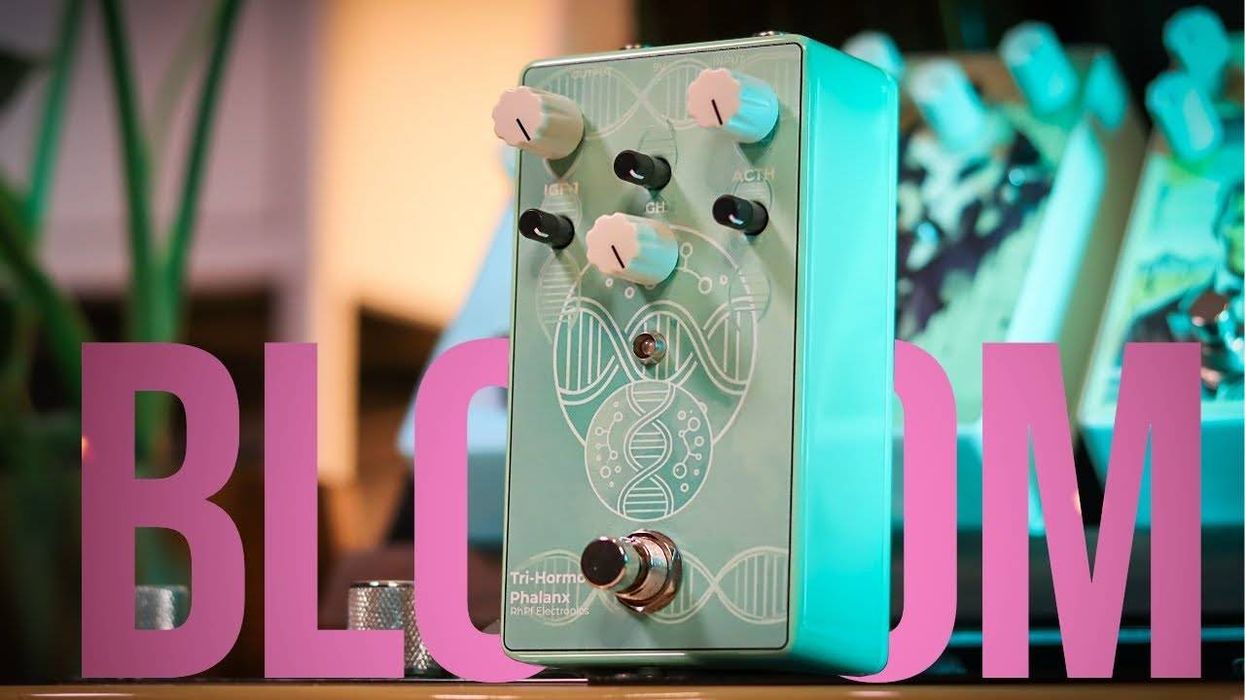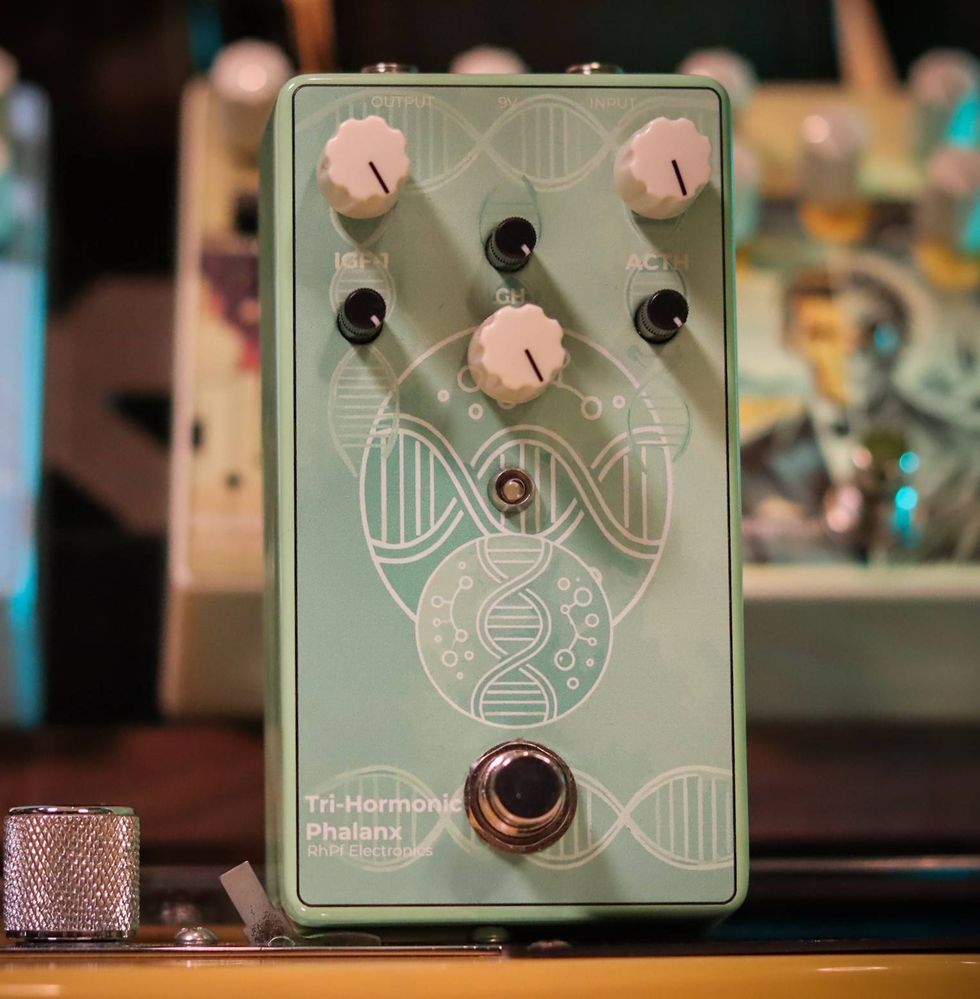The headline above is
ridiculous, of course, but I
thought it might get your attention.
You see, intercohabitative
gear smuggling is a topic that
needs to be addressed. The act
is apparently on the rise, so it
makes sense to examine the issue
here in Premier Guitar. Whether
it’s happening between you and
your wife/girlfriend or between
you and your husband/boyfriend,
it’s just not right. We all
struggle with Gear Acquisition
Syndrome, but that doesn’t mean
it’s okay to spend considerable
amounts of money on new
guitars, amps, effects, and accessories
without consulting your
significant other. Relationships
are built on trust, so don’t wreck
yours by making clandestine
purchases that jeopardize other
fiduciary goals and obligations
for you and your loved one.
As a service to you, in case
you have a bandmate or a friend
who is struggling with this, I
thought I would identify some
of the telltale signs of intercohabitative
gear smuggling so
that you know what to look for.
Keep an eye out for the following
shenanigans.
The Handling of Goods
The Theme Scheme - This ruse
assumes that one’s soul mate
can’t tell the difference between,
say, that sunburst Fender
Highway One HSS Strat with a
white pickguard that you’ve been
playing for several years and,
say, that oh-so-sweet sunburst
Fender Road Worn ’60s Strat
with a white pickguard that
you’ve been Jonesing for. Some
intercohabitative gear smugglers
might go as far as to assume that
their non-musically-inclined
loved ones won’t even notice if
they buy a new Tele, as long as it
has a sunburst finish and a white
pickguard. The trick is to never
have more than one ’burst out at
the same time.
The Stompbox Stash - People
who love and sometimes live
with guitar players don’t actually
inventory what’s on that guitarist’s
pedalboard or in their gig
bag, because, well, that would
just be overbearing. This loving
show of respect for reasonable
boundaries is a loophole for buying
more stuff. They simply won’t
remember what’s on the pedalboard!
Thus, the stompbox stash
is a secret collection of pedals
that can be rotated into a signal
chain without much notice. As
long as the stash is safely hidden,
new pedals can be added to it and
then rotated onto the board as
something is rotated off.
Gear Harboring - When no
Theme Scheme (see above) is in
play, the perpetrator will often get
a buddy to aid and abet the crime
while permanent solutions are
being figured out. The unassuming
pitch might sound something
like this: “Hey, man, wanna hold
onto my new SG for a while?
Seriously. Take it home . . . I can’t
have it around the house. I’ve got
some big projects to take care of,
and I’ll never finish them with
that thing lying around. I’ll let
you know when I need it. Just be
sure to bring it to the gig for me.
And to practice.”
Deal of the Century -
Compulsive gear buyers have
been known to hype up a deal
in an effort to curry support for
the purchase. This could also
involve buddies getting in on
the act when the mark is within
earshot. “So, dude, are you gonna
buy that amp? You totally should.
You’ll never see it at that price
again. That seller is a fool. You
have GOT to buy that thing
while you’ve got the chance.”
Dollars and Sense
The Skim - Unauthorized gear is
often funded by the Skim. Like
vermin squirreling away nuts in
a tree trunk, the offender might
snatch and hide a 10 spot from
an ATM run before date night at
the movies or via the debit-card
cash-back option at the corner
convenience store. With just the
right frequency and restraint,
those 10s on the DL can finance
illegitimate pedal purchases in no
time, or even a moderately priced
guitar or amp within a year.
Robbing Peter - Let’s say you
need to pay for a new Les Paul.
It might be time to cash in on
another piece of gear you’ve
been holding on to. People who
don’t play guitar are often clueless
to the value of vintage gear.
Selling or trading in something
really good can be hard to do,
but it can also bring in some
decent cash that can go right
back into the purchasing cycle.
This can happen completely
under the radar.
The Retail Re-Tell - Many musical
instrument dealers still practice
the ridiculous art of tagging
gear with that silly retail price
that isn’t anywhere near what
you’d pay for it. People who don’t
buy gear don’t know this. Upon
getting the occasional green light
for a sanctioned gear purchase,
the purchaser can end up with
extra jack by working the retail
price into the budget discussions.
Rebate Bait - Every now and
then a gear maker will motivate
you with a decent mail-in rebate.
The savings amounts to extra
jingle to feed your habit. But
then again, what if someone
finds out about the savings
involved? Where do you think
that money will end up if it is
declared? That’s why some people
fill out the rebate card with
their work address.
Okay, so some of these strategies
are fairly obvious, while others
are just outright deceptive—
and all in the name of buying a
sixth overdrive pedal. The one
with the cascading MOSFET and
JFET gain stages. Oh, the shame.
The point is that we should all
keep an eye out for our musical
brothers and sisters who have
GAS so bad that they might use
these tactics to perpetuate their
habit. If we don’t unite and help
these pathetic people, it could
lead to the purchase of another
amp. You know—the new
Custom Shop version of the one
you used to own 20 years ago?
Cheers!
Joe Coffey
joe@premierguitar.com
How to Hide New Gear from Your Significant Other
Some of the telltale signs of intercohabitative gear smuggling
By Joe CoffeyJan 17, 2011















